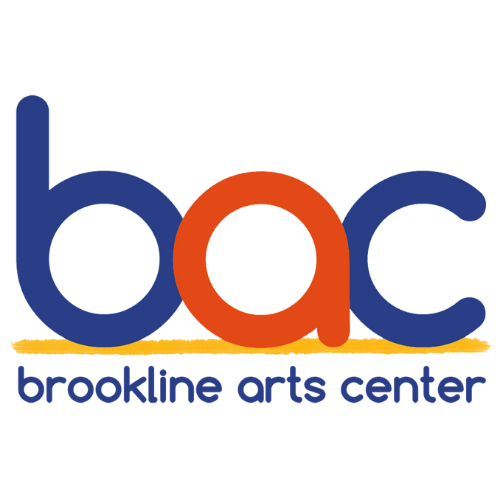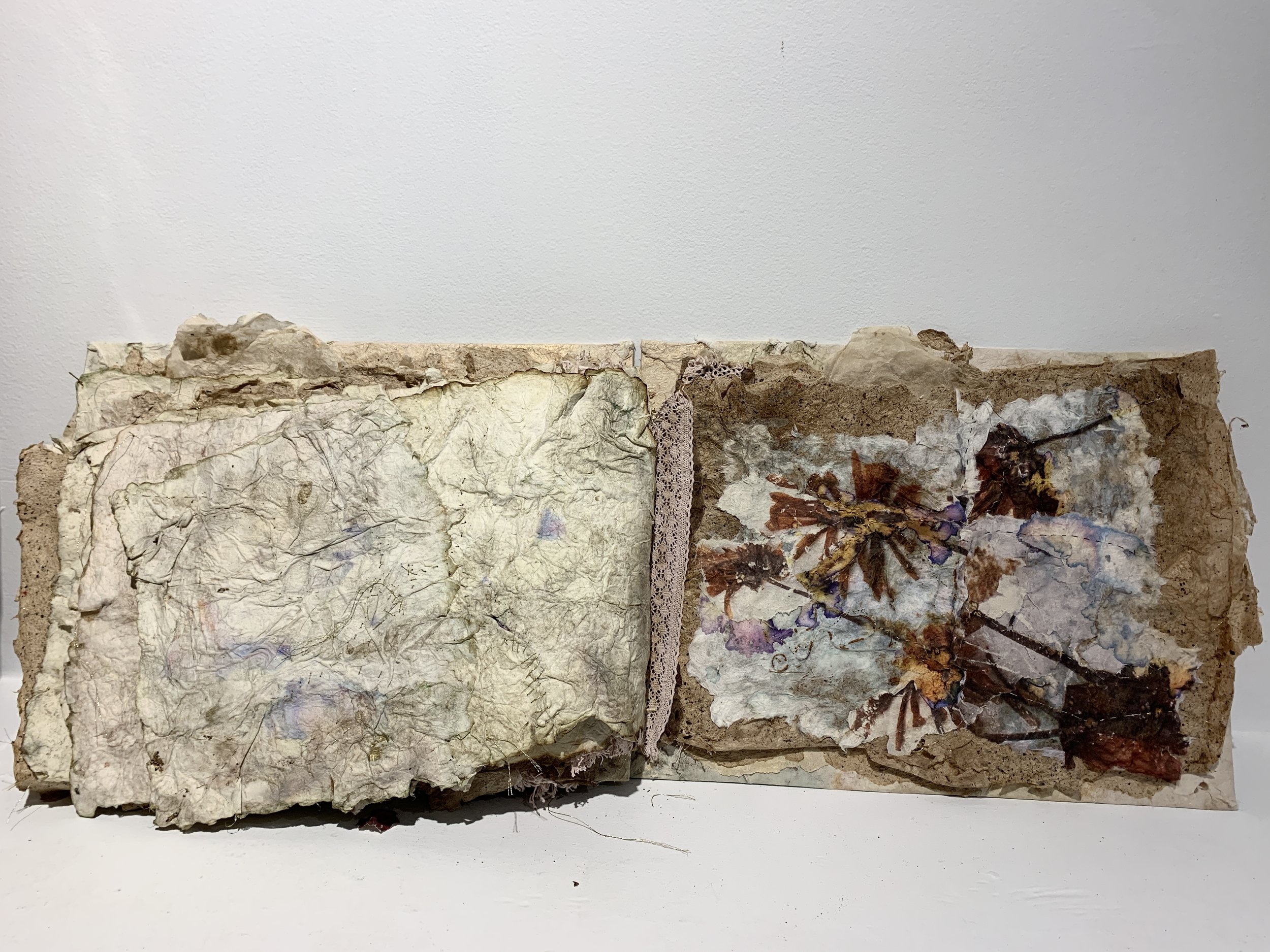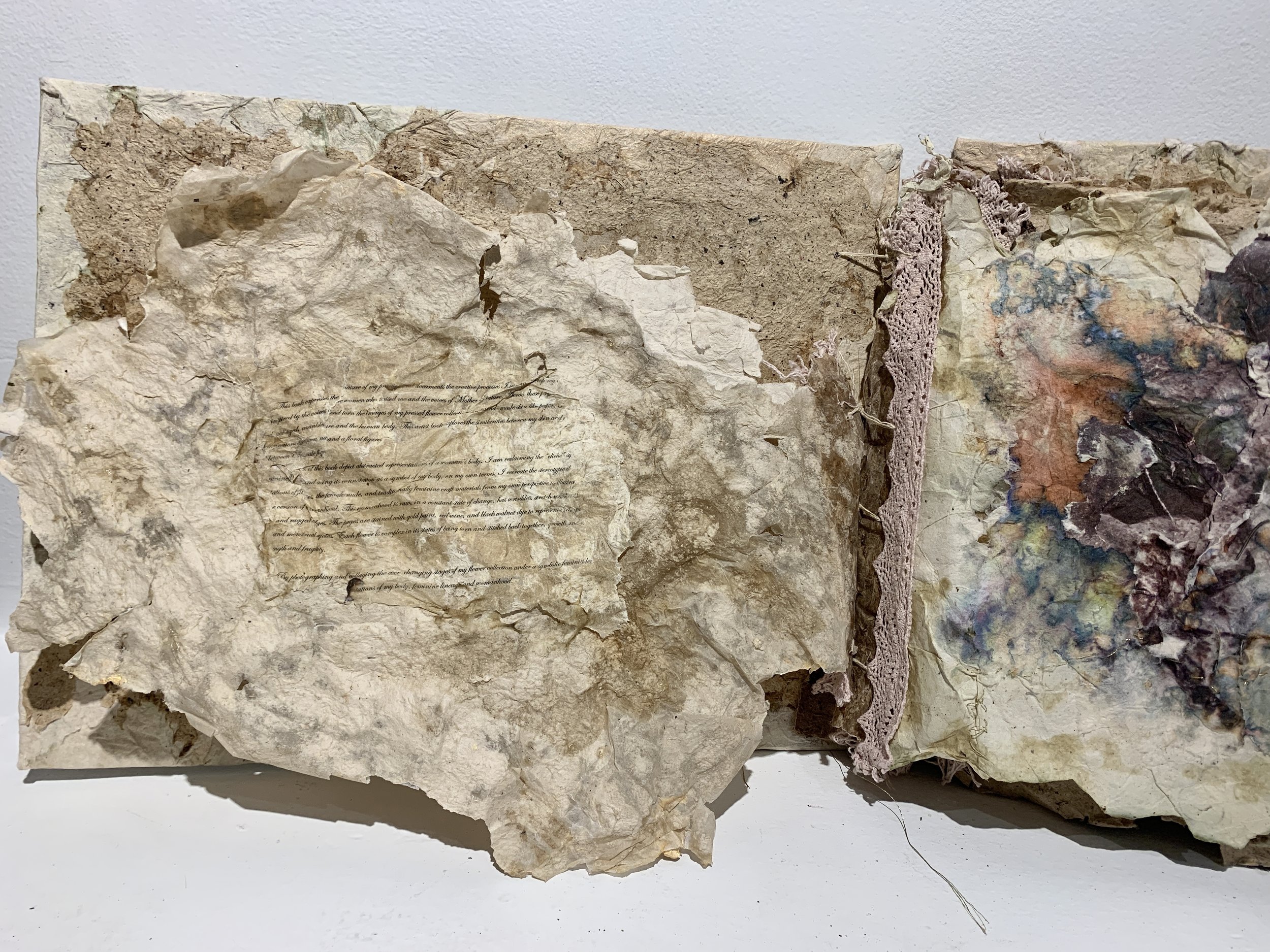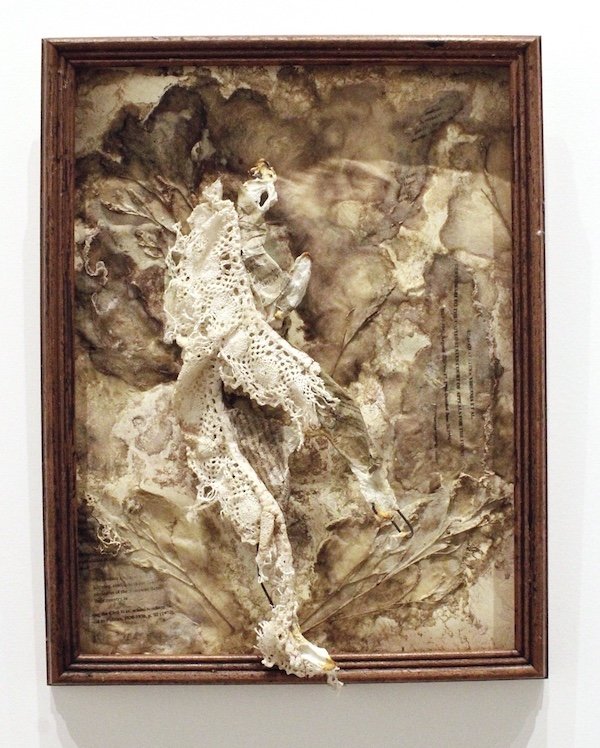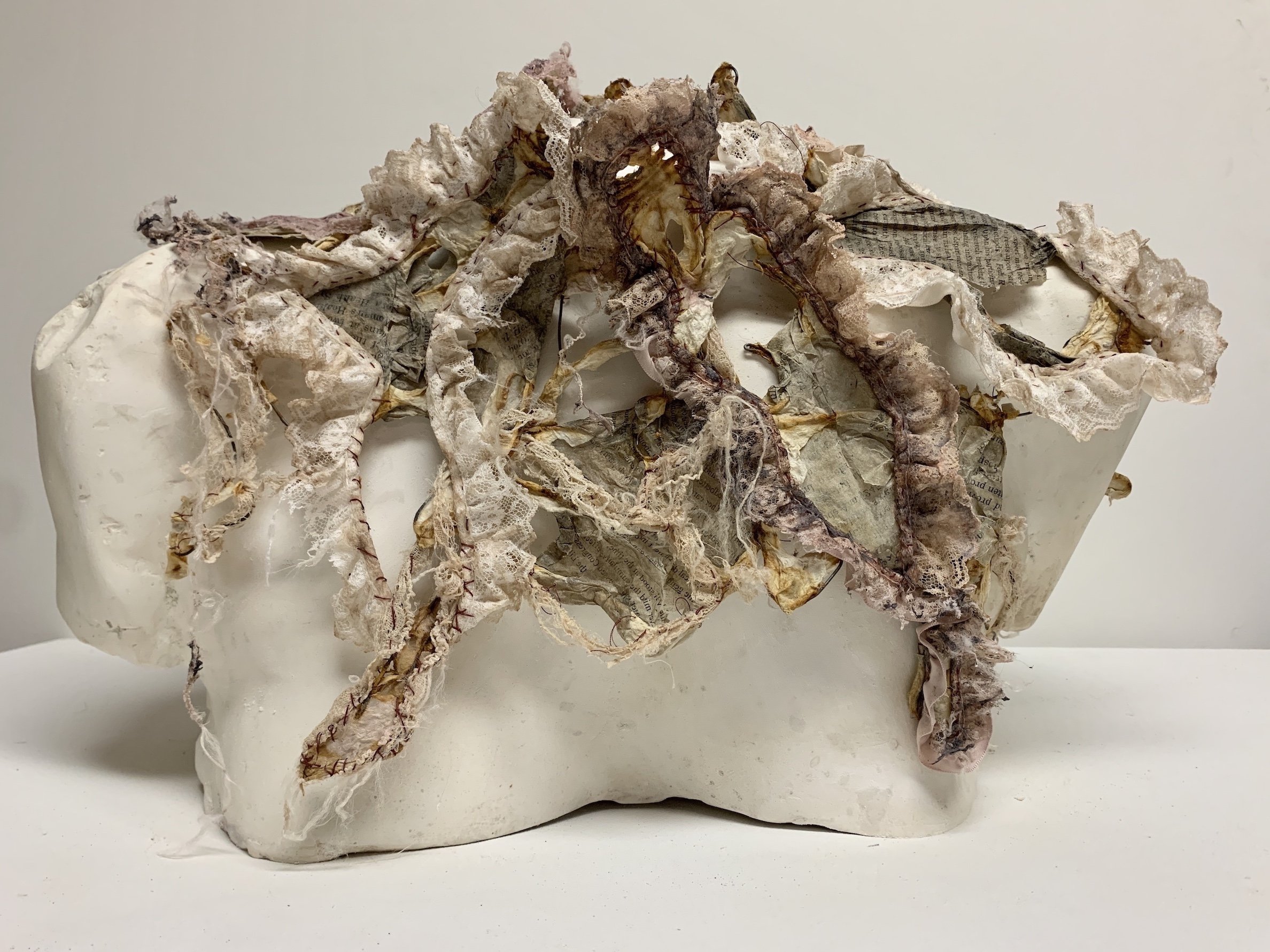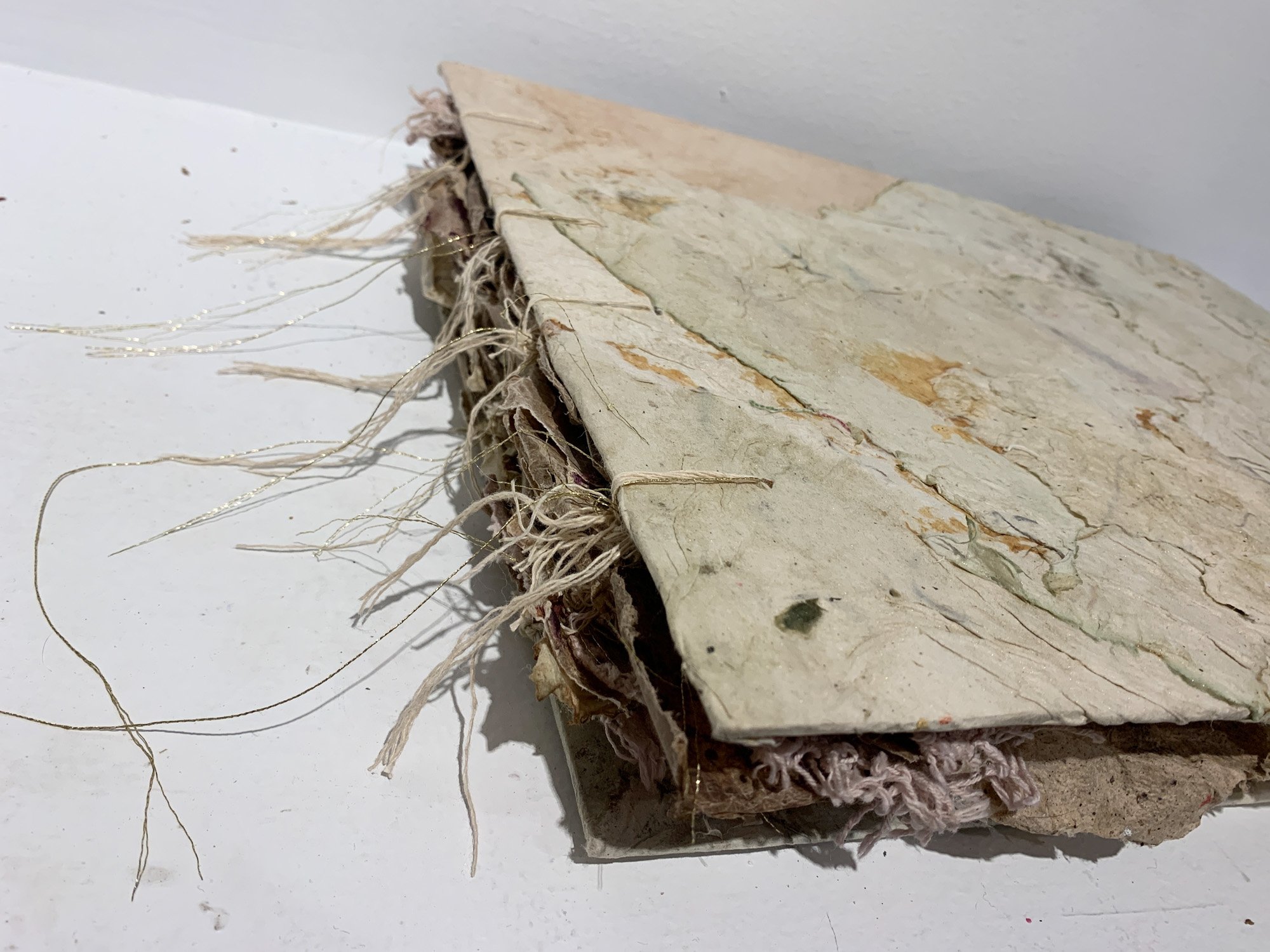Sonja Czekalski
“Material Lineage” Exhibition Feature
-
I am an interdisciplinary artist, driven to tell women’s stories. I consider the bloodline of my grandmother, my mother, my sister, the web of women who raised me, and Mother Earth herself. I consider the idea of visceral memory. A type of memory so deep, perhaps even cross-generational, that the mind cannot remember, yet the body can. I use organic material and traditionally feminine craft materials and techniques passed down by my grandmother to document and express my experience as a woman. I am interested in the interconnection between the physical, biological, and spiritual relationships between my body, my ancestry, and the earth herself.
I want the viewer to explore the female figure through an empathetic gaze. I invite the viewer to question the validity of the stereotyped feminine; to experience and respond to the emotional labor, embarrassment, shame, confusion, richness, and power of female sexuality, fertility, social expectation, and responsibility. Ultimately though my practice provides more questions and contradictions about feminism than answers, it gives voice to the raw experiences of womanhood.
Can you start by telling us more about the pieces you submitted to the “Material Lineage” exhibition and the process behind it?
Her Honor is a sculptural collar made in 2021 shortly after the passing of the late Supreme Court Justice Ruth Bader Ginsberg. The collar is a compilation of women, drawn with steel wire as their bones. Handmade flax paper as their skin, and pieces of my grandmother's lace as traces of their clothing. Fragmented text is printed on each woman's skin, from transcripts of Supreme Court Cases in which RBG fought for justice, equality, and empowerment for the marginalized. These cases include United States vs. Virginia (1995), Olmstead vs. L.C (1999), Ledbetter vs. Goodyear Tire and Rubber Company (2007), Obergefell vs. Hodges, Director, Ohio Department of Health (2015), and Whole Woman’s Health vs. Hellerstedt, Commissioner, and Texas Department of State Health Services (2016). These monumental cases addressed the discrimination of women, poverty, the handicapped, and the LGBTQIA community. At the time I made this, I wanted to create a collar that Ginsberg could wear as a physical reminder of all of the women, minorities, and people she continues to serve and save. A reminder that equality for the marginalized is still an uphill battle. As the overturn of Roe v. Wade has become a reality, and Obergefell v. Hodges is threatened to be next, Her Honor commemorates Ginsberg’s legacy. I hope it can spark courage and strength for those who need it in this time of turmoil.
My Artist book Lamina, is really a documentation of my process. Flipping through the pages you can see my photographic documentation of flowers, an object I use to study color and “feminine” metaphor. The book also includes collections of poems, personal writings, and letters from my #whatwomenwear project. The pages are made from experiments with handmade paper as I investigate material for new projects.
The framed piece, Lady Garden, is a “key” to finding the abstract elements in Her Honour and Lamina. The wire figure drawing is singular here, so the viewer is able to identify the mass of them in Her Honour. And if you look carefully, RBG’s court cases, personal stories, yellow wallpaper, and dried flowers emerge in the background. Each of these small collage scraps tells an individual story. This piece gives you a moment to find themm read them, and reflect on them. Also, the title is a nickname for a vagina. To me, it adds a little humour, but also connects back to the story, struggles, and resilience of people with vagina’s.
Your artist statement mentions a strong connection to the women in your life and Mother Earth. How do these connections influence your work?
My maternal lineage has a very strong impact on my work. I have always had a close relationship with my mother, aunts, and grandmother. I learned from their strength and weaknesses how to truly appreciate resiliency. From them, I also learned to long for a time when women do not need to overcome so much pain and adversity. To long for a time where we do not need to be admired for resiliency, that we can be admired for just being. I use their stories, and my own, to help tell our overlooked and misrepresented stories of womanhood.
Mother Nature comes in because if you look closely, especially in my piece Lamina, you can see her telling the same stories as my mother and grandmother in leaves, trees, dirt etc. There is a direct connection between patriarchy and global warming. It is amazing to me that we are at this irreversible point of climate change, yet so many choose to refuse to listen. I channel her voice in my work in hopes I can get just one more person to listen.
You talk about the concept of "visceral memory." Could you elaborate on what this means to you and how it plays a role in your artistic process?
Visceral memory and cellular memory are very important to my work. I once read that birthmarks are scars from how you died in a past life. One of my best friends has a reddish-brown birthmark that runs from the tip of her toe all the way up her neck. A psychic told her this was because she was a witch burned at the stake in a past life. Of course, I dont know if this is true, but the concept of our skin holding onto our past selves, or cellular memory passing down trauma from one generation to the next fascinates me. I use my craft to create skin-like paper with scars, stitches, and birthmarks to help illustrate this concept.
I also use the idea of visceral memory to connect to my ancestral lineage. Though I have never met them, and in some cases have never even seen a picture of them, I still have this sense of deep connection to them. I use traditional feminine craft techniques passed down to me by my grandmother, as a meditative practice to connect to them. There is something special about knowing this practice has been passed down for centuries but is constantly changing, growing, and expanding, as well.
You mention using organic and traditionally feminine craft materials. Can you provide insight into the significance of these materials in expressing your experience as a woman?
I use organic materials for a few reasons. First, of course, as I stated before, to make a clear connection with Mother Nature and her voice for climate change. I also use it as a way to make my practice sustainable such as growing my own plants, harvesting invasive seaweed, and making handmade paper. Through these materials I develop a deeper appreciate for what I am making, using, and wasting. I can practice what I preach and teach others more sustainable ways of making.
I use traditional feminine craft techniques to carry the heritage of the crafts of my maternal line and also to repurpose material. My grandmother is a traditional quilter, many of my works recycle her unused fabric scraps. I also like to reuse old clothes such as jeans and sweaters. Using the clothes connects to Mother Nature again as textiles and fast fashion are one of the leading causes of pollution. It also speaks to my consumerism and participation in this cycle.
The technique of stitchwork comes into play in all of my works through embroidery or needle felting. I like the metaphor of stitches as mending something broken. They appear fragile, but are incredible strong. They show the visceral beauty in healing and conneciton. I am interested in the connection between traditional women’s craft materials as a tool for the domestication of young girls into wives and mothers, while simultaneously providing women a tool for self expression, female friendships, meditation, and a violent practice of puncturing needles into soft materials.
I also use these materials and techniques as I like the idea of of simultaneously upholding and breaking tradition. It pays an homage to the past, yet paves a path for future generations.
Your work explores the female figure through an empathetic gaze. What message or emotions do you hope to convey to your viewers through this approach?
I hope that they will listen to our stories. I hope that if I can get one more person to listen to a raw and unapologetic side, then that is one more person at the ballot box voting for our lives. One more person at the picket line, one more person driving another over state lines for healthcare, one more person that you can confide in, lean on, and depend on. One more person to advocate for codes of conduct in the workplace, to fight for sexual assault victims, to stand up for and prevent domestic violence. One more person to unlearn the misconceptions, misrepresentations, and conspiracy theories that dominate the media and have created the war on women. One more person to understand and appreciate the diversity and complexity of what it means to feel like a woman.
Your artist statement touches on the raw experiences of womanhood. Could you share a piece that captures these raw experiences and the emotions you hope it evokes in your audience?
My book Lamina, is a little abstract, but is also like a diary to me. It holds personal stories and intimate poems. Not every word is legible, and it forces the viewer to really read between the lines. Each page is stitched with care, my fingerprints and thoughts are channeled into each page. The skin like paper making up the pages has notes of the scars and stitches of visceral memory as I spoke about above. I think these pages give voice to the literal stories it holds, yet visually tells the bigger picture. The printed letters read the story on each page , but the pages themselves carry the weight and energy of their words.
How do you measure success as a visual artist?
I think success as a visual artist means that you are making the work you are driven to create. The work does not ever need to leave your desk, studio, or bedroom. As long as you are making it and it is authentic to you, then you are a truly successful artist.
Could you share your vision for the impact your art has on viewers? What do you hope people take away from experiencing your work?
I hope viewers take with them empathy and understanding of overlooked women’s stories. I hope they are inspired to hear more by watching more movies that pass the Bechdel test, reading more books written by women, reading The Story of Art without Men by Katy Hessel, and visiting women-run galleries and businesses. I hope that people question why they have not heard these stories before, or ask why they have not listened.
Though this sounds a little cruel, I do hope that some of my pieces are painful to look at. I want viewers to know the painful side of my story as a woman. A quote from an anonymous letter to my #whatwomenwear project is “No matter how much I love women or love being a woman, I cannot disconnect my being female from the trauma it has gifted me.” At this point in my life, I feel I need to tell this story, to share my pain with others so that we can grieve together, and work to create more preventative actions to younger generations.
But I also hope viewers find a little humor, such as in the title of Lady Garden or some of the poetry in Lamina. Though the work is painful, the best medicine is laughter, and the work needs a source for healing. Most of the time, expressing my self and connecting with others while making work is healing for me, but there often needs to ne another, less serious outlet. Humour is a great tool for human connection. I hope it offers another bridge to connect the viewer to the intimate stories told in my pieces.
What message would you like to share to emerging artists based on your experience?
Make what speaks to you. As I said before, even if it never leaves your dsek, making the work you are driven to make is what will make you the most successful. And it is the most rewarding. I always thought I had to make work which spoke to something bigger, a power higher than myself. This romanticized idea of the creative genius and starving artist. I found my voice when I just started speaking for myself. I use my individual voice to tell an individual story within a collective narrative. When I share my voice, I make space for others to share theirs. In doing so, I can help so many more people share their stories, and stay authentic in my own practice.
My other advice is to just keep making work! Make, make, make. Make good stuff, bad stuff, stuff to throw away and never look at again. The only way to get to the best idea is to shuffle through all the not so great ideas. Don;t be afraid to make mistakes, just make!
